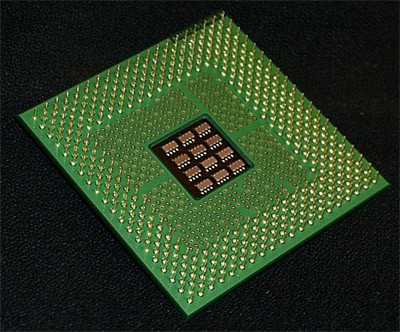Intel IDF Report #1 - CPUs
by Anand Lal Shimpi on February 15, 2000 2:29 PM EST- Posted in
- Trade Shows
The Willamette Albert Yu was demonstrating during his address ran at a core clock speed of 1500MHz, or 1.5GHz. According to Mr. Yu, this 1.5GHz chip is a member of the first run of Intel silicon for the Willamette processor and he expects to see clock speeds in excess of this initial 1.5GHz mark.

So what exactly does the Willamette offer over the Pentium III? While we will be offering a more in-depth analysis of what the Willamette brings to the desktop in our upcoming IDF summary article, in order to tide you all over we will be taking a quick look at the architecture of the Willamette.
The Willamette will begin shipping in hundred thousand quantities towards the end of this year, at clock speeds estimated above 1.5GHz. That estimation comes from the aforementioned demonstration at 1.5GHz and the statement that we should expect some higher clock speeds as the manufacturing process matures.
The CPU itself is still a 0.18-micron product and still uses Aluminum interconnects, this is in contrast to AMD’s recent demonstration of a 1.1GHz Thunderbird using Copper interconnects. According to Intel, Copper interconnects will be used in all chips towards the end of 2001 however for now they’re sticking to Aluminum. The fact that they’re using Aluminum is obviously not holding back their clock speeds courtesy of the 1.5GHz demonstration we keep on mentioning.
As a CPU, the Willamette features a few unique features that we haven’t seen from Intel in the past. The Willamette will be the first Intel CPU to feature their Streaming SIMD Extensions 2, or SSE2 that is an improvement over the original SSE instructions in their ability to handle 128-bit SIMD-Int and double precision 64-bit SIMD-FP instructions. The latter is a feature that is geared towards the professional environment however it should be interesting to see how SSE2 affects the overall performance of the CPU. We have already seen that SSE can improve performance considerably on Pentium III systems, case in point being video card drivers that take advantage of the SIMD-FP instructions as well as application specific benchmarks that illustrate a huge improvement in performance when SSE instructions are taken advantage of. The SSE2 instructions are a total of 144 new instructions that will be featured on the Willamette.
One of the biggest features of the Willamette is its ability to run the Integer ALU (Arithmetic Logic Unit) at twice the clock speed of the CPU. This means that on a 1.5GHz Willamette, the Integer ALU is actually running at 3.0GHz. For games this won’t increase performance by a large amount due to their largely floating point oriented performance dependency however in business applications and other applications that are primarily integer performance dependent the Willamette will truly excel.










0 Comments
View All Comments